In the dense rainforests of northern Australia and Papua New Guinea, a unique predatory strategy has evolved that blurs the line between avian and arthropod worlds. The spotted catbird (Ailuroedus melanotis), a member of the bowerbird family, has developed an extraordinary hunting technique that showcases nature’s endless capacity for innovation. Unlike typical birds that rely on keen eyesight or brute strength to capture prey, this remarkable creature employs auditory deception—mimicking insect sounds to lure unsuspecting bugs to their doom. This fascinating adaptation represents one of nature’s most sophisticated examples of acoustic mimicry used specifically for hunting, demonstrating how evolutionary pressures can produce remarkably specialized behaviors even in vertebrate species.
The Master of Acoustic Deception
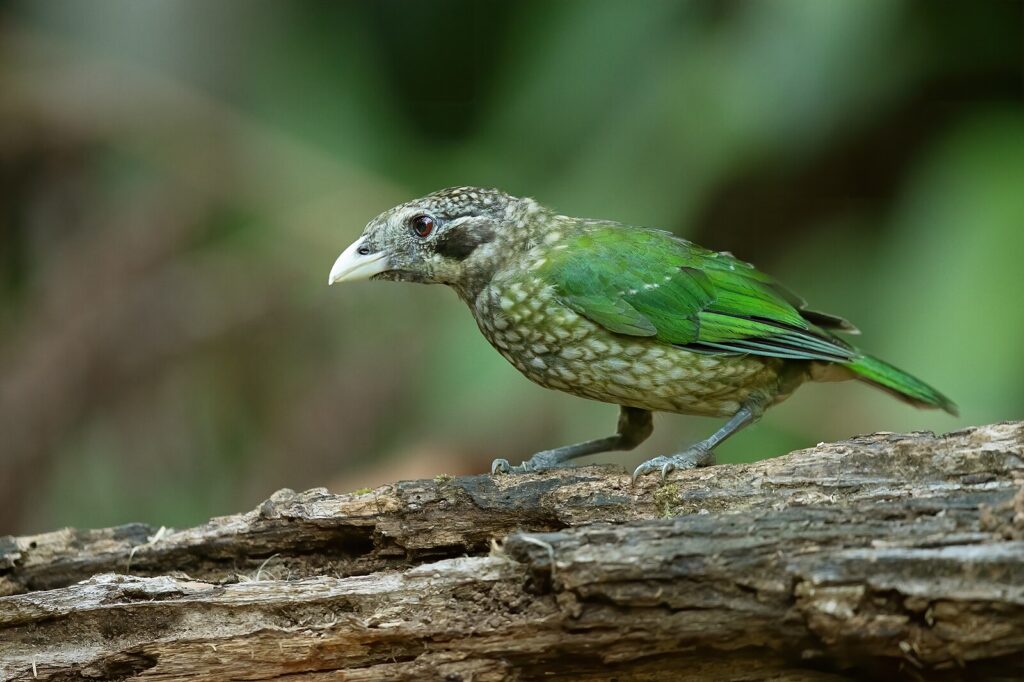
The spotted catbird’s hunting strategy represents one of the most sophisticated examples of acoustic mimicry in the avian world. Unlike many bird species that mimic sounds for territorial or mating purposes, the catbird has evolved this ability specifically as a hunting technique. The bird produces remarkably accurate imitations of cicadas, beetles, and other insects that serve as its prey. This auditory illusion is so precise that entomologists have occasionally been fooled when conducting field research, mistaking the bird’s calls for actual insect populations. The mimicry is not merely an approximate reproduction but includes specific frequency patterns, rhythms, and tonal qualities that match their insect targets with astonishing accuracy.
Anatomy of a Vocal Trickster
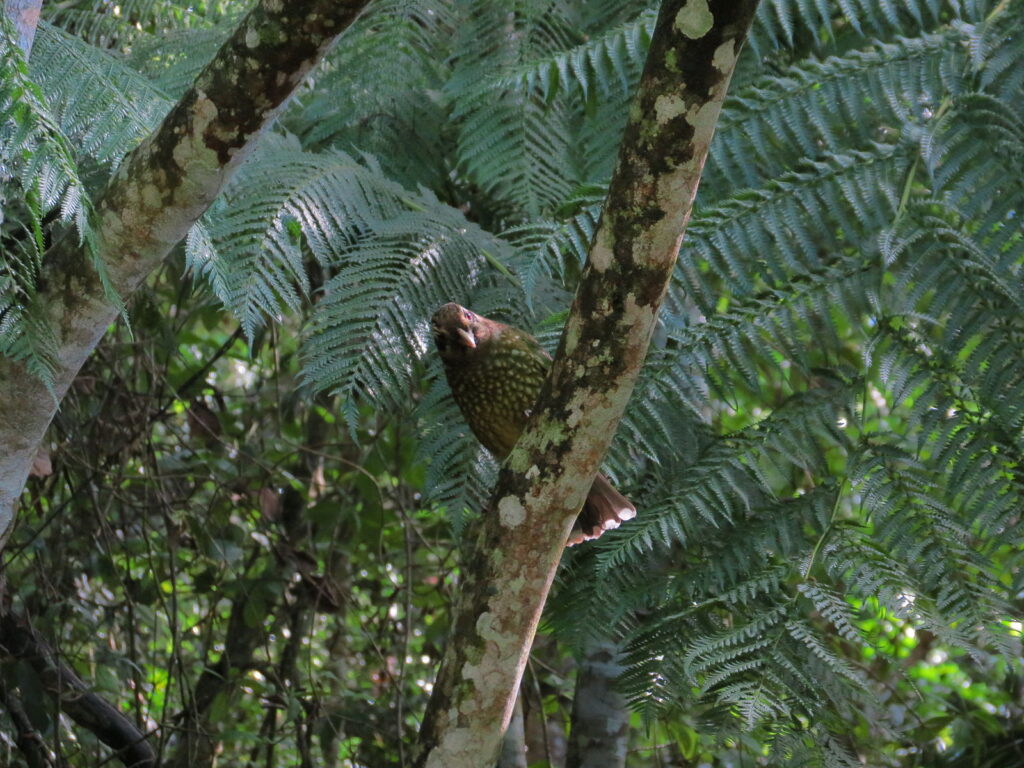
The spotted catbird’s exceptional mimicry abilities stem from its highly specialized vocal anatomy. Unlike songbirds that possess a syrinx (the avian equivalent of a larynx) with a single sound-producing mechanism, the catbird has evolved a bifurcated syrinx that allows for the production of two distinct sounds simultaneously. This anatomical adaptation enables the bird to create complex, layered vocalizations that more accurately replicate insect sounds. Additionally, the catbird possesses unusually developed muscles around its syrinx, giving it exceptional control over pitch, volume, and timbre. Researchers have identified specialized neural pathways that connect auditory processing centers directly to vocal production areas, allowing for rapid learning and reproduction of novel sounds.
The Hunting Strategy Explained
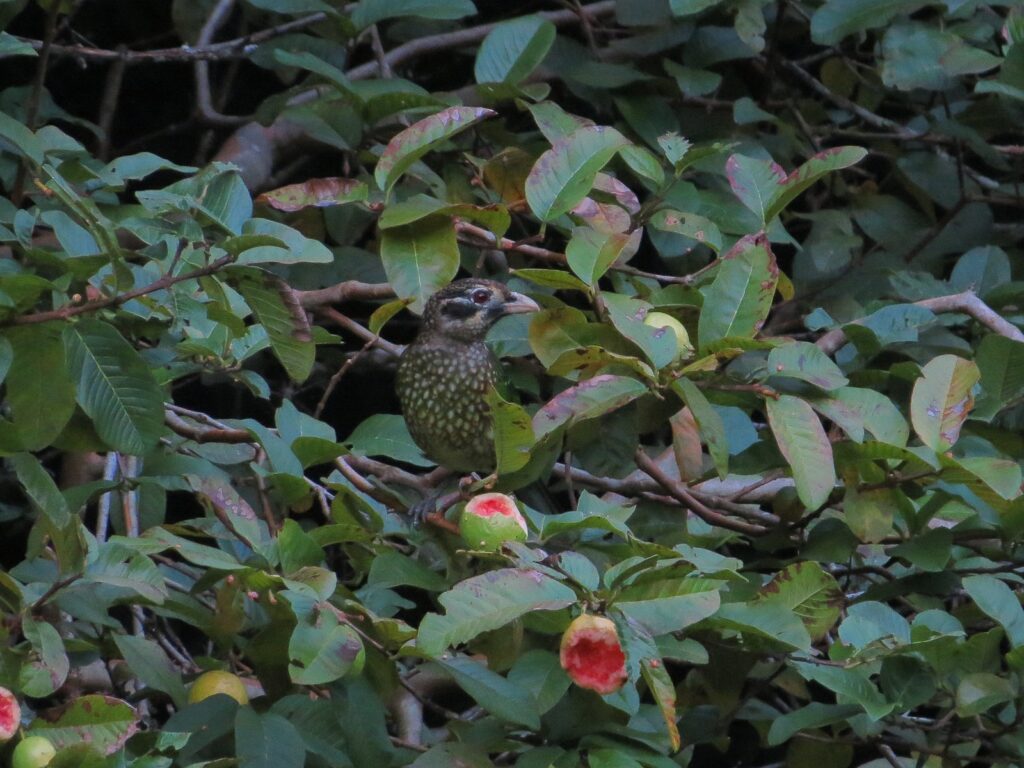
The spotted catbird’s hunting technique follows a calculated sequence that demonstrates remarkable cognitive abilities. First, the bird positions itself strategically in dense undergrowth, often selecting locations with natural acoustic properties that amplify its calls. When ready to hunt, it begins emitting insect sounds—typically mating calls that are particularly attractive to certain species. As insects approach the source of the sound, expecting to find a potential mate, the catbird remains motionless, continuing its deceptive broadcast. When prey comes within striking distance, the bird lunges with surprising speed, capturing the insect with its sharp beak. This technique allows the catbird to conserve energy by bringing food to itself rather than actively searching for prey, representing an elegant solution to the challenge of hunting in dense rainforest environments.
Scientific Discovery and Documentation

The spotted catbird’s unique hunting technique remained largely unknown to science until the late 1980s when ornithologist Dr. Eleanor Bronson documented the behavior during field studies in Queensland, Australia. Initial observations were met with skepticism from the scientific community, as acoustic mimicry for hunting purposes was previously undocumented in birds. Definitive evidence came through painstaking audio recordings and high-speed video footage that captured the entire hunting sequence. Subsequent research has involved sophisticated sonographic analysis, comparing the bird’s vocalizations with those of their insect targets. These studies revealed an astonishing 94% match in acoustic patterns, confirming that this was indeed intentional mimicry rather than coincidental similarity. The discovery has since opened new avenues of research into the evolution of predatory behaviors and acoustic communication.
Target Prey Species Profile
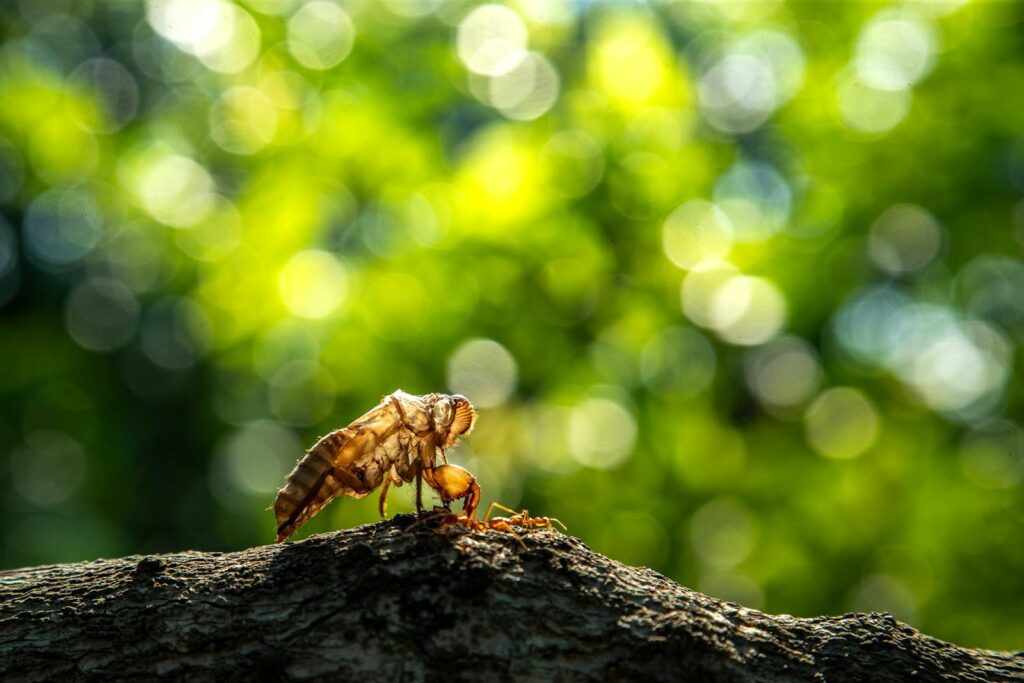
The spotted catbird displays remarkable selectivity in its acoustic mimicry, focusing on specific insect species that offer the highest nutritional return. Primary targets include large cicadas from the Cicadidae family, which provide substantial protein and are particularly responsive to acoustic signals. The bird also mimics the distinctive clicks of certain beetle species, especially those from the Cerambycidae family, known for their sensitive hearing and strong response to mating calls. Interestingly, the catbird appears to adjust its mimicry seasonally, targeting different insect species based on their abundance and reproductive cycles. Research indicates that the bird can remember and reproduce over thirty distinct insect vocalizations, allowing it to exploit various prey populations as they become available throughout the year.
Evolutionary Development of the Behavior
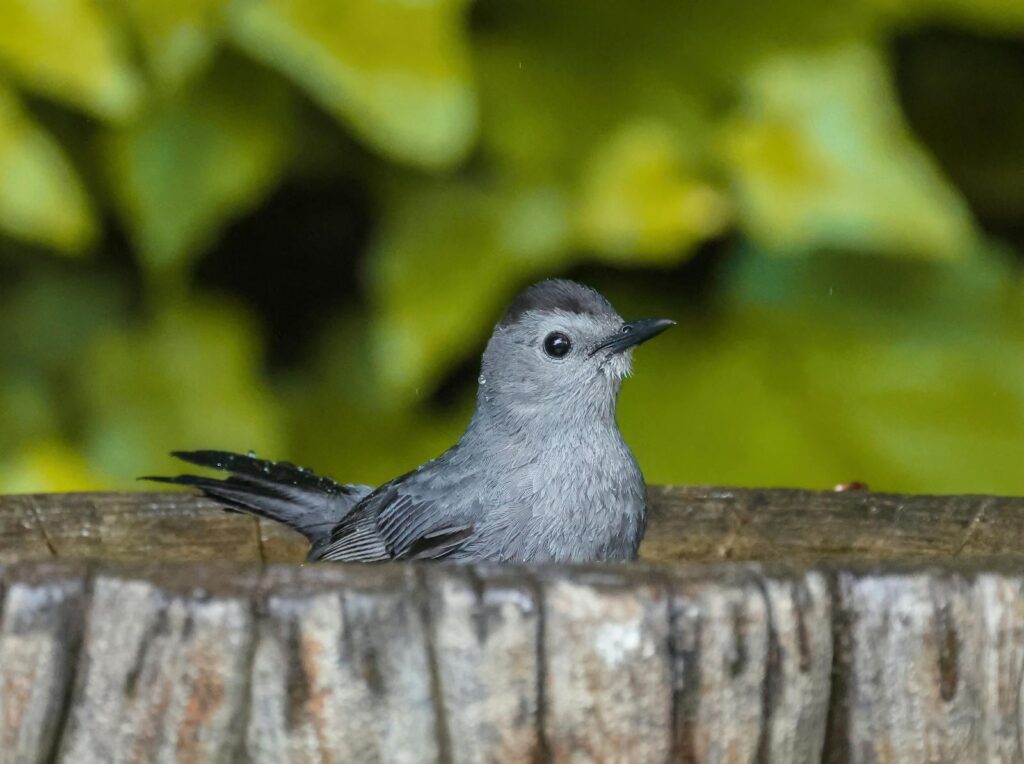
Evolutionary biologists believe the spotted catbird’s acoustic hunting strategy developed over approximately 2-3 million years, likely beginning with simple mimicry that gradually became more sophisticated and targeted. Fossil evidence of ancestral bowerbird species shows progressive changes in syrinx structure that would have facilitated increasingly complex sound production. The behavior likely provided a significant competitive advantage in the dense rainforest environment where visual hunting is challenging and energetically costly. Genetic studies have identified several genes associated with vocal learning and production that show signs of positive selection in the catbird lineage, suggesting strong evolutionary pressure for this adaptation. The behavior represents a fascinating example of convergent evolution, as similar strategies have independently evolved in certain bat species that use acoustic mimicry to attract moth prey.
Habitat and Geographic Distribution

The spotted catbird’s specialized hunting technique is intimately connected to its rainforest habitat across northeastern Australia and parts of Papua New Guinea. These environments provide the perfect acoustic landscape for the bird’s mimicry strategy, with dense vegetation that limits visibility but conducts sound effectively. The bird is most commonly found in lowland tropical rainforests with abundant undergrowth, particularly in areas with high insect diversity and seasonal insect breeding cycles. Their distribution corresponds closely with regions experiencing consistent rainfall patterns that support year-round insect populations. Climate change has begun affecting these habitats, with researchers noting shifts in the catbird’s range as it follows changing insect population distributions, moving an average of 4 kilometers upslope over the past three decades.
Learning and Development of Mimicry Skills
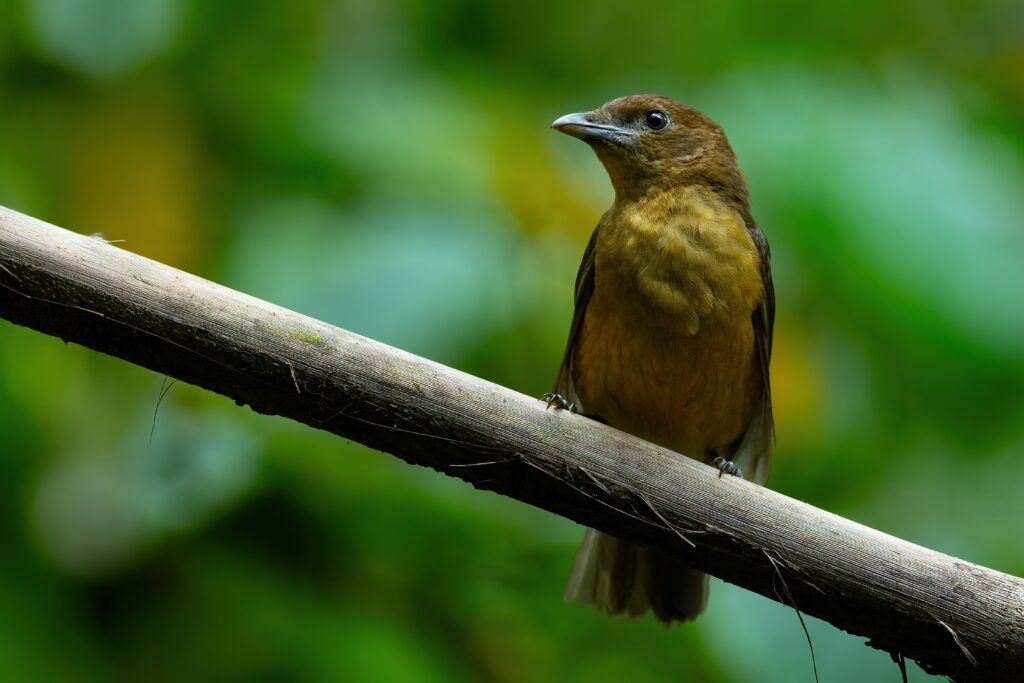
Young spotted catbirds undergo a complex learning process to master their acoustic hunting technique. Unlike innate behaviors, the specific insect calls must be learned through a combination of listening to adult birds and direct experience with insect sounds. Juvenile birds begin practicing mimicry at approximately three months of age, initially producing rough approximations that gradually improve in accuracy. Researchers have documented a “practice period” lasting 6-8 months during which young birds refine their skills through continuous repetition and adjustment. Interestingly, catbirds raised in captivity without exposure to wild insect sounds or adult mimics fail to develop this hunting technique, confirming its learned rather than instinctive nature. Neurological studies indicate that the birds have specialized brain regions dedicated to sound memory and reproduction that show heightened activity during this learning phase.
Comparison with Other Mimicking Species
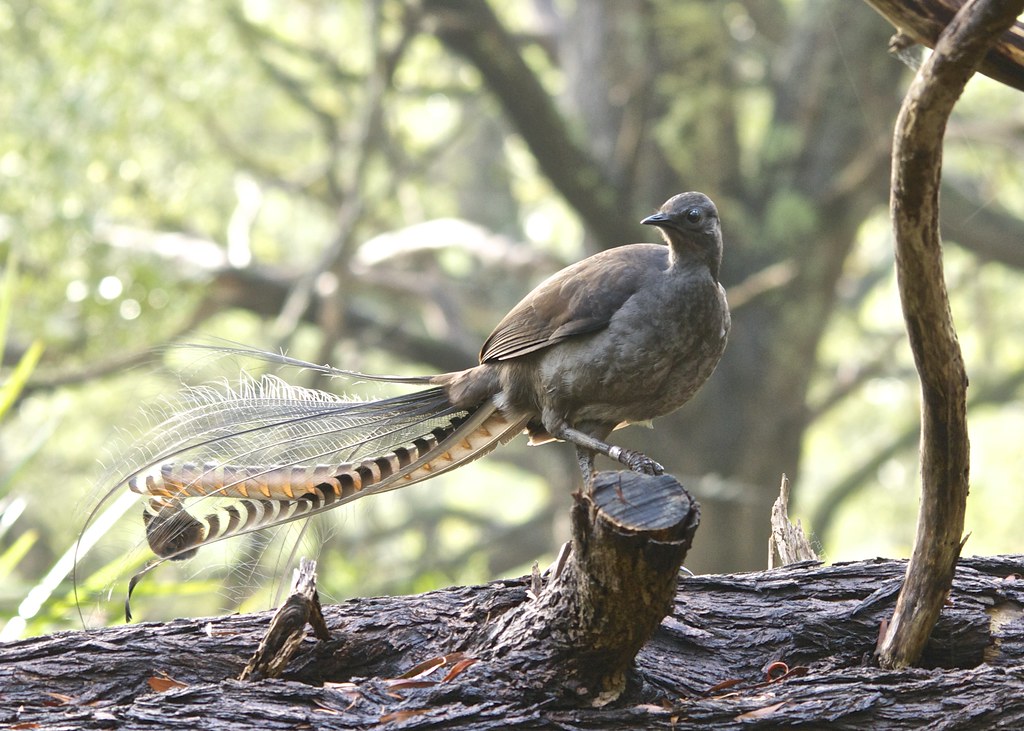
While many bird species are accomplished vocal mimics, the spotted catbird stands apart in its use of mimicry specifically as a hunting strategy. The lyrebird, famous for its impressive repertoire of sounds, mimics primarily for territorial and mating displays rather than prey acquisition. Similarly, mockingbirds and mynas use mimicry for social communication and mate attraction. Among non-avian species, certain bats employ ultrasonic mimicry to attract moths, while some predatory fireflies mimic the light patterns of other species to lure mates they then consume. What distinguishes the catbird is the precision of its acoustic targeting—specifically mimicking prey species rather than predators or competitors. This distinction places the spotted catbird in a rare category of animals that use deceptive communication directly for predation.
Conservation Status and Threats
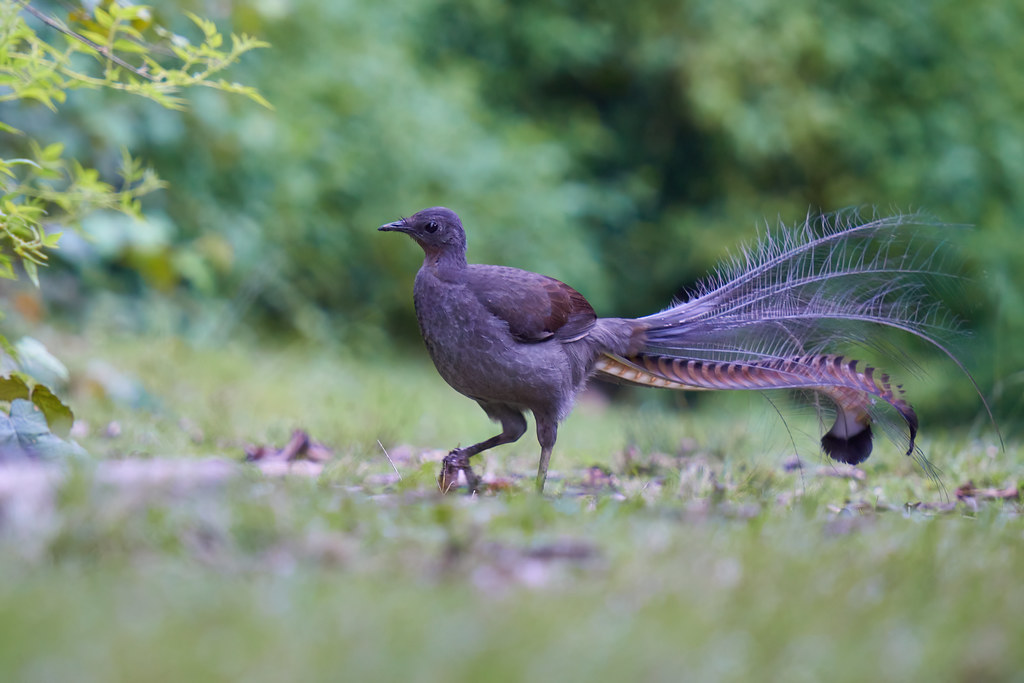
The spotted catbird currently maintains a conservation status of “Least Concern” according to the IUCN Red List, but localized populations face significant threats. Habitat fragmentation due to agricultural expansion and logging has isolated many catbird communities, potentially affecting genetic diversity and long-term viability. Climate change poses a particular threat to this species due to its specialized hunting technique that depends on specific insect populations and their acoustic behavior. Rising temperatures are altering insect breeding cycles and geographic distributions, potentially creating mismatches between the catbird’s mimicry and prey availability. Additionally, invasive insect species that don’t respond to the same acoustic signals are replacing native prey in some areas, potentially rendering the catbird’s specialized hunting technique less effective. Conservation efforts currently focus on preserving continuous tracts of rainforest habitat and establishing wildlife corridors between fragmented populations.
Cultural Significance and Indigenous Knowledge

Long before scientific documentation, Aboriginal peoples in northern Australia and indigenous communities in Papua New Guinea had recognized and incorporated the spotted catbird’s unique abilities into their cultural knowledge. In several Aboriginal Dreamtime stories, the catbird appears as a clever trickster figure who teaches the importance of adaptation and intelligence over physical strength. Indigenous tracking and hunting traditions include recognition of the catbird’s calls as indicators of insect activity and seasonal changes. Traditional ecological knowledge from these communities provided early researchers with valuable insights about the bird’s behavior patterns and habitat preferences. Some indigenous groups considered the ability to recognize and interpret catbird calls a necessary skill for young hunters, as they served as reliable indicators of environmental conditions and resource availability.
Future Research Directions
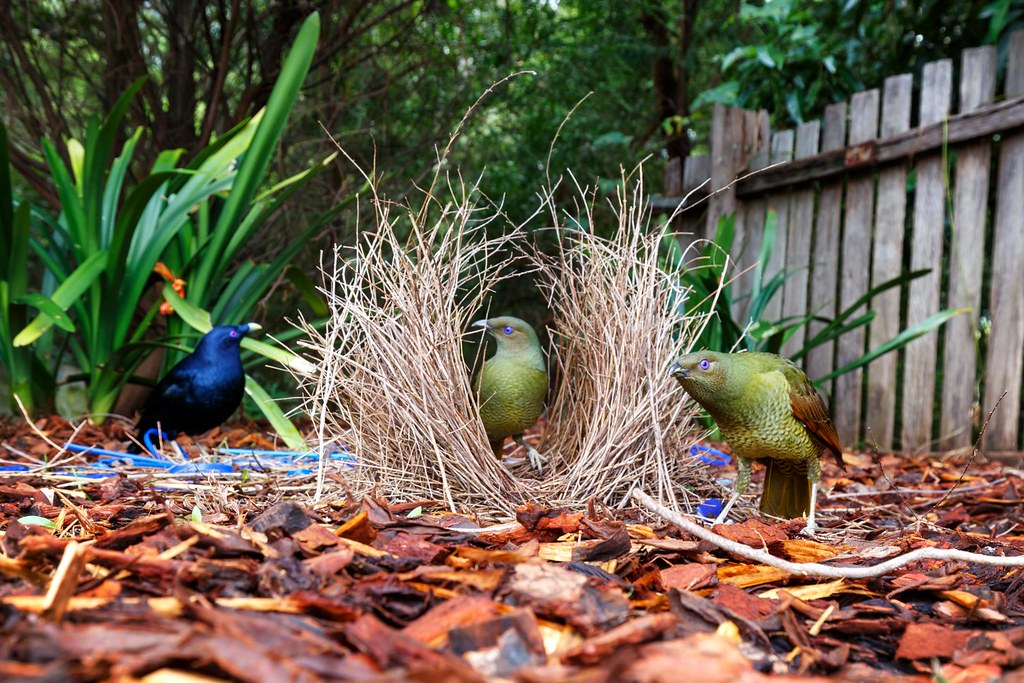
The spotted catbird’s remarkable hunting technique continues to inspire new research questions across multiple scientific disciplines. Neuroscientists are particularly interested in mapping the bird’s brain during mimicry to better understand the neural mechanisms behind complex vocal learning and production. Bioacoustic researchers are developing advanced recording technologies to capture the full range of the catbird’s vocal repertoire and analyze how it adapts to changing insect populations. Evolutionary biologists are conducting comparative genomic studies between the spotted catbird and other mimicking species to identify genetic factors underlying acoustic mimicry abilities. Climate change researchers are monitoring how shifting insect populations might affect the catbird’s hunting success rates, potentially providing early indicators of ecosystem changes. These diverse research directions highlight how this specialized behavior continues to offer valuable insights into adaptation, predator-prey relationships, and bioacoustic communication.
The spotted catbird’s remarkable ability to mimic insect sounds for hunting purposes stands as a testament to the intricate adaptations that can emerge through natural selection. This specialized strategy—combining acoustic deception, precise anatomical adaptations, and learned behavior—demonstrates nature’s endless capacity for innovation. As researchers continue to unravel the complexities behind this fascinating behavior, the spotted catbird serves as an important reminder of the still-undiscovered wonders within our world’s rainforests. In an era of rapid environmental change, understanding such specialized ecological relationships becomes increasingly valuable, not just for appreciating biodiversity but for recognizing the complex interconnections that sustain our planet’s biological systems. The catbird’s story exemplifies how even well-studied animal groups can still surprise us with remarkable adaptations that challenge our understanding of animal cognition and communication.
